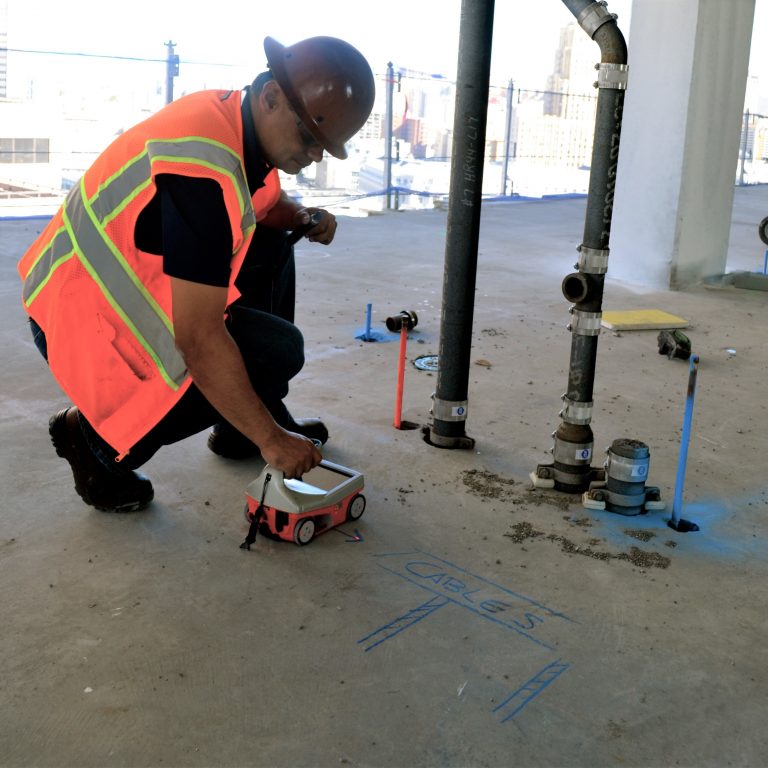Introduce the Transformative Power of Concrete Scanning in Making Best Use Of Effectiveness and Safety
Concrete scanning has arised as a crucial device in the building sector, offering unmatched advantages in boosting task efficiency and ensuring security criteria. By utilizing advanced innovation, concrete scanning permits professionals to see beyond the surface area, revealing concealed intricacies that could affect the architectural stability of a structure. The transformative power of concrete scanning depends on its capability to provide real-time data and detailed understandings, revolutionizing how tasks are planned and carried out. As we dive right into the ins and outs of this cutting-edge method, a globe of opportunities opens, showcasing a new period of building and construction practices that prioritize precision and safety.
Importance of Concrete Scanning
Making sure the structural stability and safety and security of construction jobs starts with the critical action of conducting thorough concrete scanning. Concrete scanning is a non-destructive method made use of to identify and map subsurface aspects within concrete structures. This process is vital in identifying possible dangers, such as rebar, post-tension cable televisions, and avenues, that may be hidden within the concrete. By using sophisticated modern technologies like ground-penetrating radar (GPR) and electromagnetic induction, building groups can properly locate these components without causing any type of damage to the framework.
Additionally, concrete scanning helps in optimizing task timelines and budget plan by staying clear of unanticipated prices and hold-ups that may develop due to unexpected blockages within the concrete. Eventually, investing in extensive concrete scanning is a positive method that boosts both effectiveness and security in building jobs.
Just How Concrete Scanning Functions
Concrete scanning runs as a crucial device in building and construction tasks by utilizing innovative innovations to spot and map subsurface elements without causing architectural damages. Ground Permeating Radar (GPR) and Electromagnetic Induction (EMI) are two main approaches utilized in concrete scanning. GPR works by discharging high-frequency radar pulses into the surface, which recuperate when they run into subsurface items or voids. The moment taken for the signal to return shows the depth and location of the items. EMI, on the other hand, uses electromagnetic areas to determine variances in product structures, such as identifying rebar or conduits within concrete frameworks.
During the scanning procedure, the information accumulated is analyzed in real-time, permitting immediate identification of potential dangers or barriers below the surface area. By using these advanced technologies, concrete scanning substantially minimizes the threat of expensive problems and injuries on building and construction sites.
Benefits of Concrete Scanning
Using sophisticated scanning innovations in building and construction projects offers a plethora of advantages, boosting both efficiency and security on-site. One of the primary benefits of concrete scanning is the capacity to identify and locate ingrained things such as rebar, post-tension wires, and avenues properly. By identifying these elements prior to boring or cutting into concrete frameworks, the risk of unintentional strikes is considerably decreased, preventing possible injuries to employees and damages to the structure itself. Furthermore, concrete scanning aids in preparation and designing better, as it supplies specific info regarding the place and depth of structural parts.

Instance Researches: Concrete Scanning Success

In an additional instance, a construction business made use of 3D concrete scanning to evaluate the problem old concrete structures in a historic structure. The detailed scans supplied valuable insights right into the level of deterioration and helped focus on maintenance efforts successfully. By proactively attending to areas of problem identified via scanning, the company had the ability to prolong the life-span of the structure and guarantee passenger safety.
These situation studies highlight the transformative power of concrete scanning in improving effectiveness, precision, and safety in construction projects.
Executing Concrete Scanning in Projects
Carrying out sophisticated scanning technologies throughout construction projects has become increasingly necessary check my source for boosting precision and security. By integrating concrete scanning into project planning and execution, construction groups can identify prospective risks, such as rebar or post-tension cable televisions, hidden within concrete frameworks. This positive method reduces the risk of accidents, hold-ups, and expensive rework, eventually bring about a lot more effective project timelines and budgets.
To implement concrete scanning effectively, task managers need to collaborate closely with experienced scanning experts to determine the most appropriate scanning strategies for the specific task demands. Engaging scanning professionals from the beginning of a job enables the group to produce comprehensive scanning plans that address essential areas of problem and make certain complete information collection.
Furthermore, including concrete scanning into normal task workflows can streamline decision-making procedures, as real-time scan data provides instant insights right into the condition of concrete frameworks - Concrete Scanning. This data-driven approach promotes informed analytic and allows groups to make adjustments immediately, fostering a culture of performance and security throughout the project lifecycle

Verdict
Finally, concrete scanning plays a critical function in enhancing performance and safety in building tasks. By making use of advanced technology to map and spot out underlying structures within concrete, this process helps to stop costly mistakes, guarantee structural integrity, and lessen risks on site. With the ability to uncover covert aspects and supply precise information, concrete scanning confirms to be a valuable this page tool for optimizing project outcomes and making the most of general success.
Concrete scanning is a non-destructive technique made use of to identify and map subsurface components within concrete frameworks. In addition, concrete scanning aids in maximizing task timelines and spending plan by preventing unforeseen expenses and delays that might occur due to unexpected obstructions within the concrete. One significant situation study involves a large renovation task where concrete scanning played an essential role in ensuring task success.In an additional situation, a building company made use of 3D concrete scanning to analyze the condition of maturing concrete structures in a historical building. By incorporating concrete scanning right into project preparation and implementation, building teams can recognize prospective risks, such as rebar or post-tension cables, hidden within concrete structures.
Comments on “Key Advantages of Making Use Of Concrete Scanning Modern Technology”